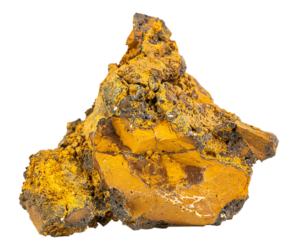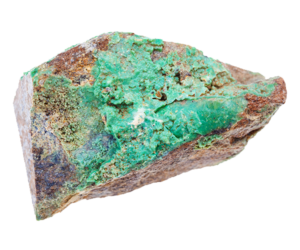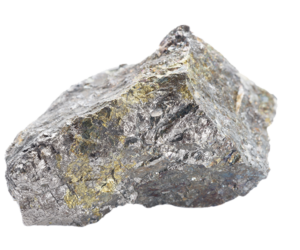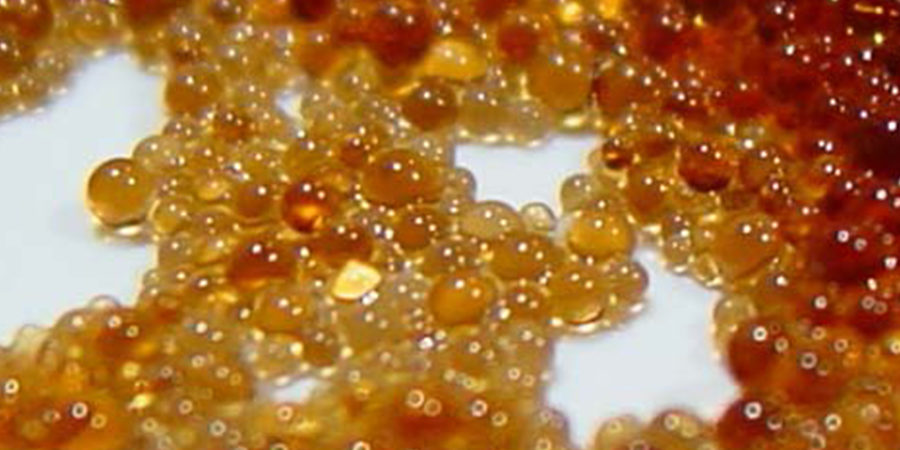Where does nickel come from?
Pure nickel (Ni) is a silvery-white metal that is rarely found as a pure metal in the earth’s crust because it will oxidise when it comes into contact with oxygen. Pure nickel can be found in the interiors of larger nickel–iron meteorites that were not exposed to oxygen when outside the earth’s atmosphere or in ultramafic rocks.
Nickel is mainly mined from two groups of ore deposits. The first group of ore deposits are the laterites such as limonite (Fe,Ni)O(OH), a nickeliferous mixture, or garnierite, a mixture of various nickel-rich silicates and hydrous nickel. The second group are the sulphide ores where the principal ore mineral is pentlandite [(FeNi)₉S₈].
Table 1: Most common nickel ores:
Laterites | Sulphide ores | |
Limonite | Garnierite | Pentlandite |
 |  |  |
Nickel metal does not react with the oxygen of air under ambient conditions. Nickel metal is mainly used for stainless steel and nickel alloys production. The most common nickel cation is Ni²⁺ but other oxidation states of nickel such as Ni ³, Ni ⁴⁺ are also produced for different applications.
How is nickel present in groundwater?
The Pourbaix or potential/pH diagram in Figure 1 of nickel shows the nickel speciation in water. The area between the orange dotted lines represents the stability zone of water. The diagram shows that the nickel speciation in water is dominated by its cationic elementary Ni²⁺ form.
Figure 1: The Pourbaix or potential/pH diagram of nickel species

How is nickel removed from groundwater?
The cationic elementary form of nickel (Ni²⁺) can be efficiently captured and removed from groundwater using a weak acid cation (WAC) selective chelating resin with an iminodiacetic group, such as Resinex™ CH-23.
Figure 2: A selective chelating resin with an iminodiacetic group

The average cationic nickel (Ni²⁺) removal capacity of Resinex™ CH-23 is 20g of Ni²⁺ per litre resin but depends on the water matrix. Often the water contains other cations which will contribute to the bed exhaustion; therefore, it is always recommended that you contact our technical experts for sizing of a heavy metal removal system as other metals can influence the estimated consumption.
Resinex™ CH-23 is a chelating resin that also efficiently removes other heavy metal cations such as copper (Cu²⁺), vanadium (Va²⁺), lead (Pb²⁺), zinc (Zn²⁺) and cadmium (Cd²⁺) in their elementary cationic form.
Recommended nickel (Ni²⁺) removal operating conditions
The selection of the operating conditions of a nickel removal system depends on:
- Minimum superficial contact time necessary of the application
- Other cationic species in the water
- Desired bed life
- Operating conditions (continuous, discontinuous)
One AquaFlow™ can be used for the removal of nickel (Ni²⁺) at a superficial contact time of a minimum of six minutes, but usually two AquaFlow™ in series, merry-go-round systems are used with a typical flow rate per vessel: 10-20BV/h.
How to calculate nickel (Ni²⁺) removal from groundwater
Assume a contaminated groundwater with 0,3 mg/l nickel (Ni²⁺) that needs to be purified with following properties:
- Average flow of 30m³/h
- Continuous operating 24/24 -7/7
The annual nickel (Ni²⁺) load is then calculated as follows:
- Nickel concentration: 0.3mg/l = 0.3g/m³
- Annual with nickel (Ni²⁺) contaminated ground water volume: 30m³/h x 8,600hpa= 258,000 m³
- The annual nickel (Ni²⁺) load: 3g/m³ x 258,000m³= 77,400g = 77.4kg Ni²⁺
This gives at an average loading of 20kg Ni²⁺/m³ Resinex™ CH-23 a consumption of approximately 4m³ per annum. An AquaFlow™ filter can be selected from our industrial mobile filter range in order to obtain the desired exchange frequency.
It is always recommended that you contact our technical expert for sizing of a heavy metal removal system as other metals can interfere in the estimated consumption.


